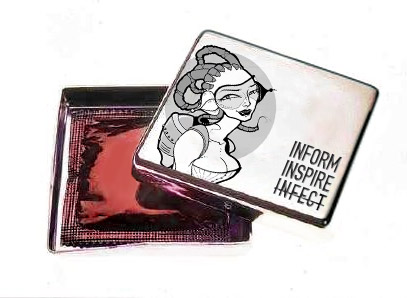Fantasy And Fantasy Magazines

Contrary to the beliefs of some, Coilhouse is not a “fantasy magazine”. Yes, it’s a repository of amazing and wonderful things, but a “fantasy magazine” it is not. Some may dispute this fact and to those people I would say that you are mistaken. At the very least you are confused as to the definition of “fantasy magazine”, for just because you may woolgather about the inner workings of Coilhouse, such musings do not qualify the publication as a “fantasy magazine”.
The dark corners of your mind have no effect, then, on the actual reality of the magazine itself meaning, for instance, that editorial meetings are staid affairs in no way resembling a Cinemax offering in which the three lovely women who helm this ship dress in beautiful clothing and totally make out. Nor do the day-to-day operations of Coilhouse consist of the aforementioned goddesses lounging about in provocative frilly things in a giant, Victorian mansion when, suddenly, a casual discussion about Russian literature turns heated and finally breaks out into a sexy pillow fight, after which they totally make out. These things do not happen, I assure you, and there’s no use arguing about it or even threatening to quit even though you may feel that certain parties may have misled you or outright lied to you in order to lure you into their cold, fetid little lair where, instead of satin pillows, limber nymphs clad in frilly-things, and sloppy make-out sessions, you found a room with a desk, a computer, two buckets, and a 24 hour curfew. So, yeah, no fantasies here.

Der Orchideengarten (The Garden of Orchids) , on the other hand, was a fantasy magazine and it may be the first such publication of its kind. It ran for 51 issues, from 1919-1921, pre-dating Weird Tales by four years and was printed in the bedsheet format of 9¾” x 12″, square-bound. Contributors ranged from contemporary, German fantasy authors to stories by foreign writers such as H.G. Wells, Dickens, Poe, Voltaire, Victor Hugo, Pushkin, Washington Irving, and Hawthorne, among others. There were even two issues dedicated to mystery stories and one dedicated to erotic literature.
The real star here, though, has to be the art. Everything from reproductions of medieval woodcuts to work by Gustave Doré to pieces by Alfred Kubin is represented here. The covers, seen here, are simply magnificent, making those of Weird Tales (much as I love them) appear almost childish by comparison. Certainly it can be said that Der Orchideengarten‘s covers lack the kitsch factor so prevalent in its American counterpart. Whether that’s a good thing or not is up to the reader.
There are a myriad number of additional scans at the ever wonderful A Journey Round My Skull as well as some great interior illustrations; well worth checking out.














